Regulations & Permits
The Commission on Water Resource Management’s Stream Protection and Management (SPAM) Branch is responsible for protecting stream channels from alteration whenever practicable and for managing the sharing of surface water resources. The SPAM Branch accomplishes these objectives through a regulatory permitting system.
The sections below describe the different regulations for stream channels, permits required for working in and around the stream channel, and other processes associated with surface water. Should you have any questions, please contact the SPAM Branch at (808) 587-0234 or via email at [email protected].
Stream Channel Alteration Permit (SCAP)
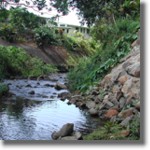 A Stream Channel Alteration Permit (SCAP) is required for any temporary or permanent activity within the stream bed or banks that may: 1) Obstruct, diminish, destroy, modify, or relocate a stream channel; 2) Change the direction of flow of water in a stream channel; 3) Place any materials or structures in a stream channel; or 4) Remove any material or structure from a stream channel.
A Stream Channel Alteration Permit (SCAP) is required for any temporary or permanent activity within the stream bed or banks that may: 1) Obstruct, diminish, destroy, modify, or relocate a stream channel; 2) Change the direction of flow of water in a stream channel; 3) Place any materials or structures in a stream channel; or 4) Remove any material or structure from a stream channel.
The State Water Code defines a stream as “any river, creek, slough, or natural water course that usually flows in a defined bed or channel.” Routine streambed and drainageway maintenance activities and the repair of existing facilities are exempt from the SCAP requirements.
- View Form SCAP-APP in PDF
- View Form SCAP-APP in DOCX
- Hawaii Administrative Rules 13-169 relating to Stream Channel Alteration Permits
- View the SCAP Process Diagram
Stream Diversion Works Permit (SDWP)
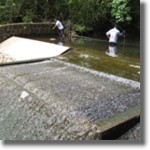 A Stream Diversion Works Permit (SDWP) is required for the removal of water from a stream into a channel, ditch, tunnel, pipeline, or other conduit for offstream purposes including, but not limited to, domestic, agricultural, and industrial uses. Construction of a new stream diversion structure or alteration of an existing structure require an SDWP. Routine maintenance activities are exempt from SDWP requirements.
A Stream Diversion Works Permit (SDWP) is required for the removal of water from a stream into a channel, ditch, tunnel, pipeline, or other conduit for offstream purposes including, but not limited to, domestic, agricultural, and industrial uses. Construction of a new stream diversion structure or alteration of an existing structure require an SDWP. Routine maintenance activities are exempt from SDWP requirements.
- View Form SDWP-APP in PDF
- View Form SDWP-APP in DOCX
- Hawaii Administrative Rules 13-168 relating to Stream Diversion Works
- View the SDWP Process Diagram
Petition to Amend Instream Flow Standard (PAIFS)
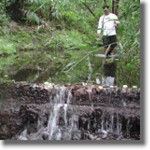 Early efforts to update the Commission’s Water Resource Protection Plan (WRPP) highlighted the need for surface water hydrologic units to delineate and codify Hawaii’s surface water resources. Surface water hydrologic units served as an important first-step towards improving the organization and management of surface water information that the Commission collects and maintains, including diversions, stream channel alterations, and water use.
Early efforts to update the Commission’s Water Resource Protection Plan (WRPP) highlighted the need for surface water hydrologic units to delineate and codify Hawaii’s surface water resources. Surface water hydrologic units served as an important first-step towards improving the organization and management of surface water information that the Commission collects and maintains, including diversions, stream channel alterations, and water use.
- View Form PAIFS in PDF
- View Form PAIFS in DOCX
- Hawaii Administrative Rules 13-169 relating to Instream Flow Standards
- View the PAIFS Process Diagram
Request for Determination (RFD)
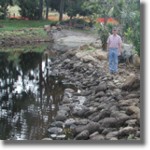 If uncertain whether or not a project will require a SCAP or SDWP, it is best to consult the Commission staff and submit a Request for Determination (RFD). The Commission staff requests that an RFD Form be completed to ensure that staff has adequate information to make a timely and accurate determination on the impacts of the potential project.
If uncertain whether or not a project will require a SCAP or SDWP, it is best to consult the Commission staff and submit a Request for Determination (RFD). The Commission staff requests that an RFD Form be completed to ensure that staff has adequate information to make a timely and accurate determination on the impacts of the potential project.
Complaint / Dispute Resolution (CDR)
 Early efforts to update the Commission’s Water Resource Protection Plan (WRPP) highlighted the need for surface water hydrologic units to delineate and codify Hawaii’s surface water resources. Surface water hydrologic units served as an important first-step towards improving the organization and management of surface water information that the Commission collects and maintains, including diversions, stream channel alterations, and water use.
Early efforts to update the Commission’s Water Resource Protection Plan (WRPP) highlighted the need for surface water hydrologic units to delineate and codify Hawaii’s surface water resources. Surface water hydrologic units served as an important first-step towards improving the organization and management of surface water information that the Commission collects and maintains, including diversions, stream channel alterations, and water use.
Surface Water Use Permits (SWUP)
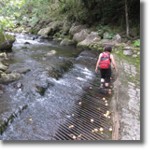 Designated surface water management areas are subject to special rules to protect the water resources within given hydrologic units. The Commission has administrative control over the withdrawals and diversions of surface water within management areas.
Designated surface water management areas are subject to special rules to protect the water resources within given hydrologic units. The Commission has administrative control over the withdrawals and diversions of surface water within management areas.
Upon designation of a surface water management area, all surface water users therein are required to obtain a Surface Water Use Permit (SWUP) from the Commission. The Commission will only accept Applications for SWUP for Proposed New Use in a Designated Surface Water Management Area.